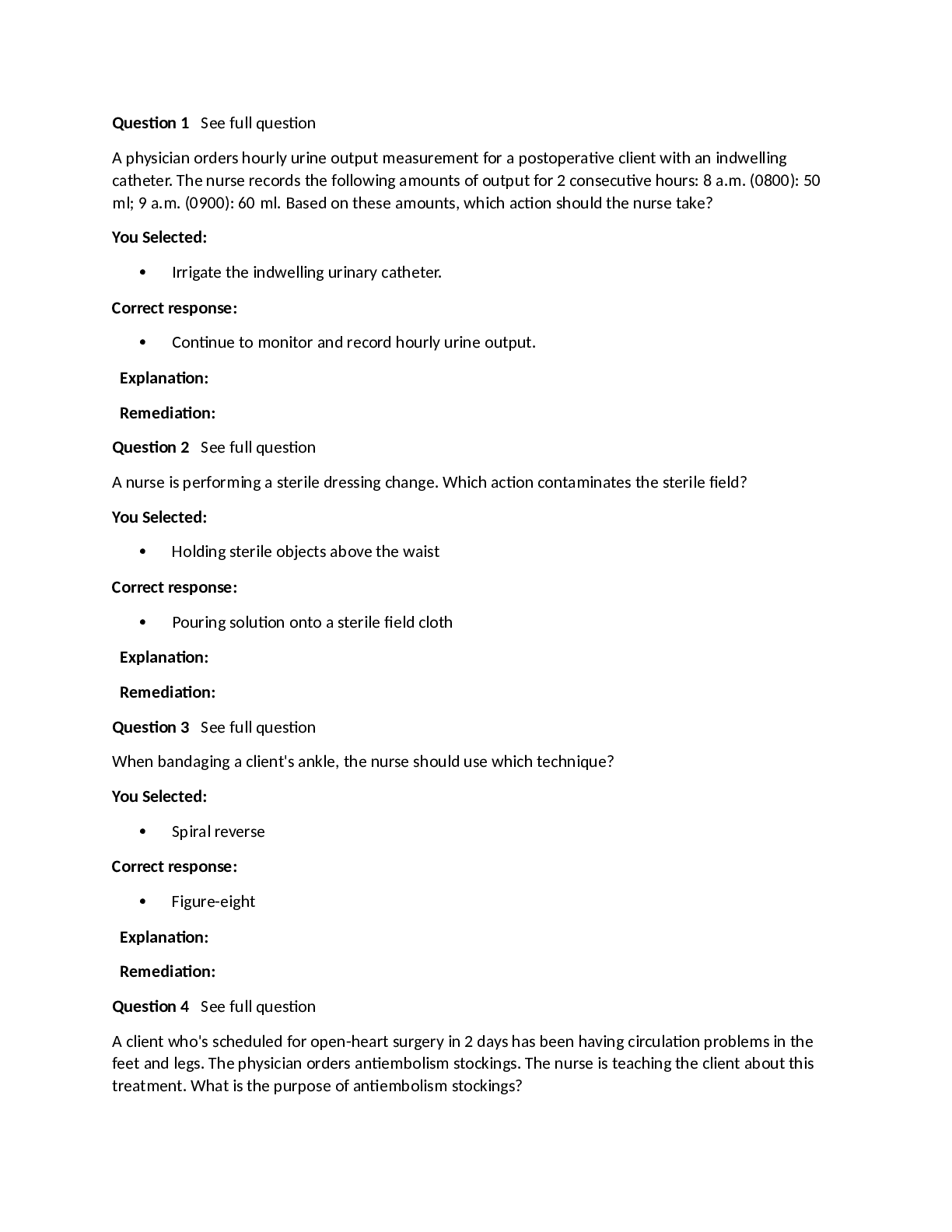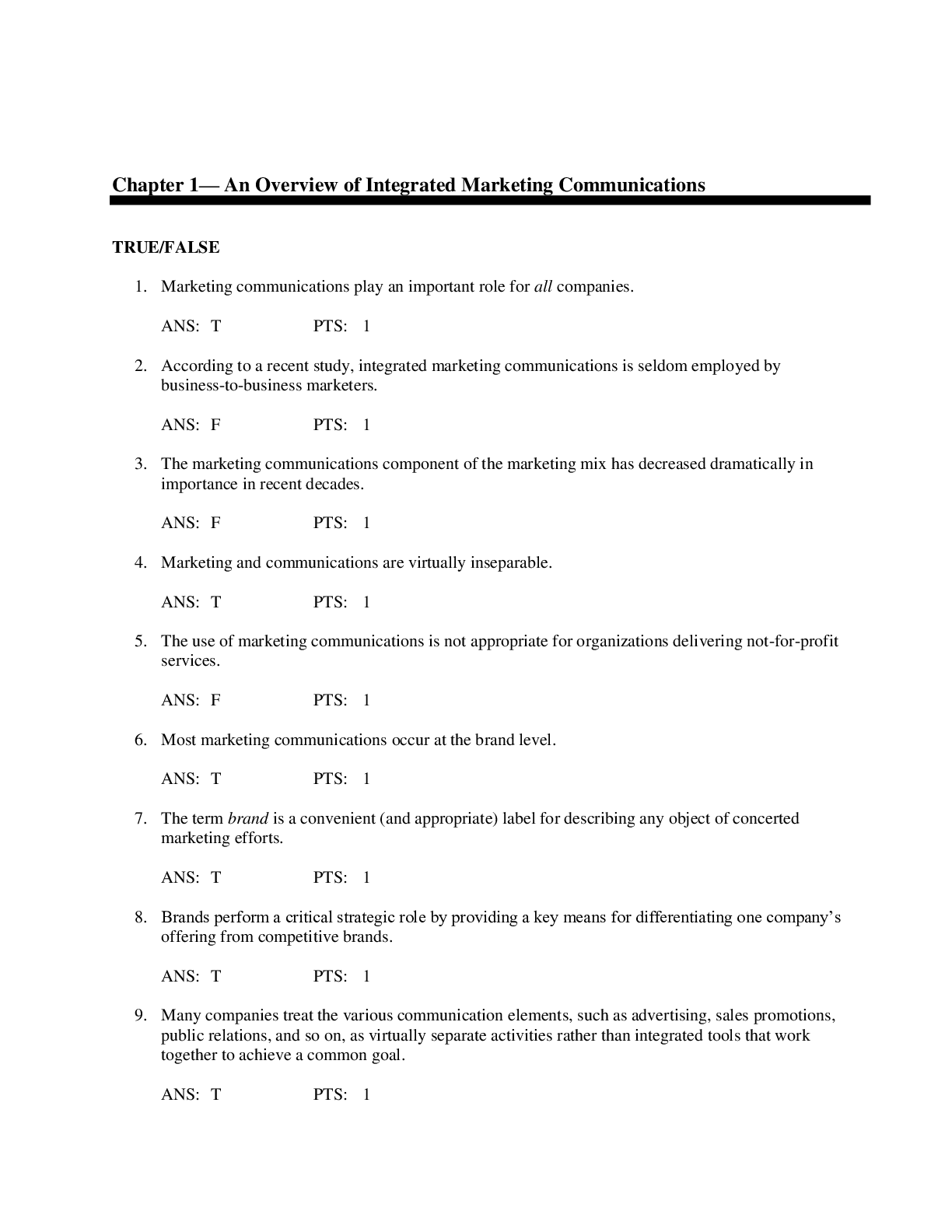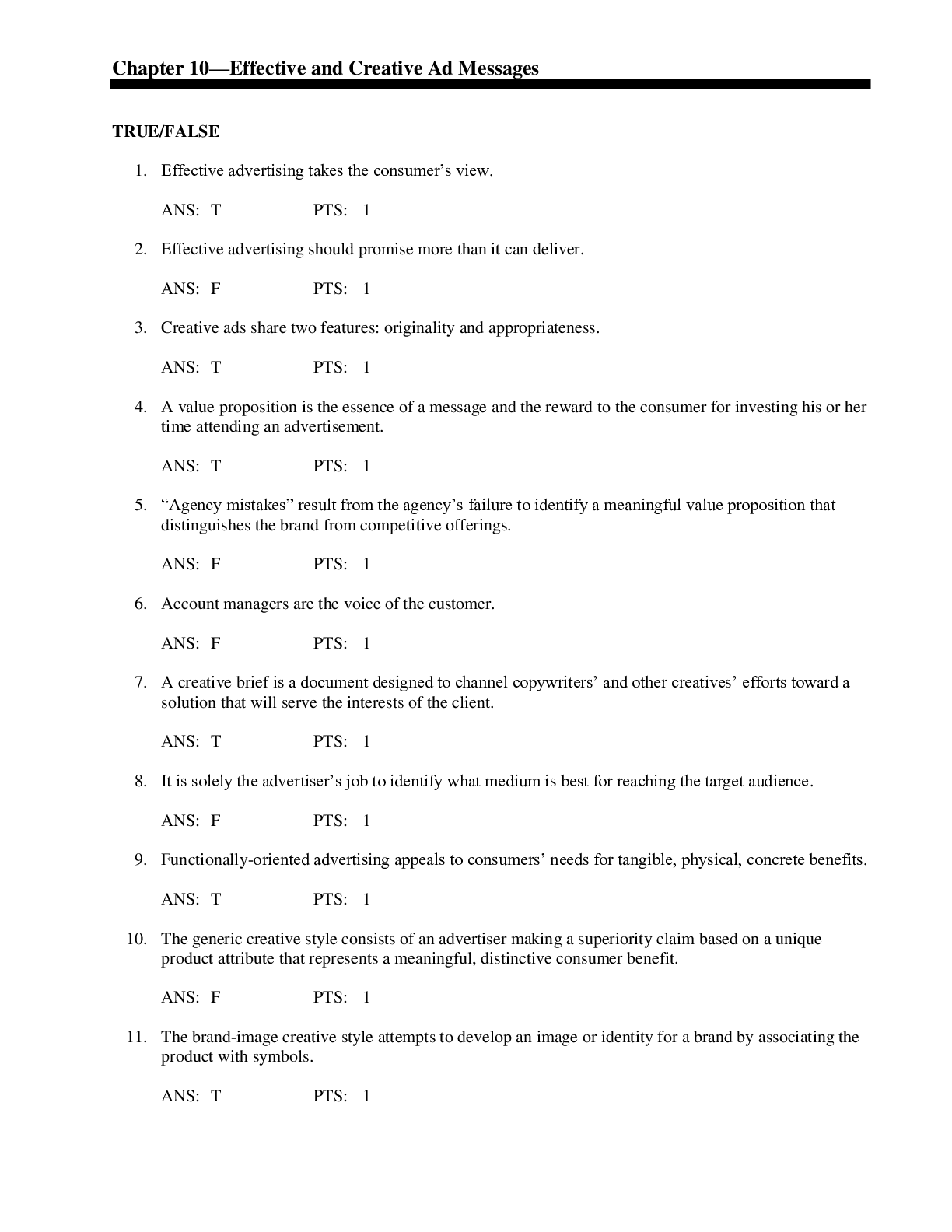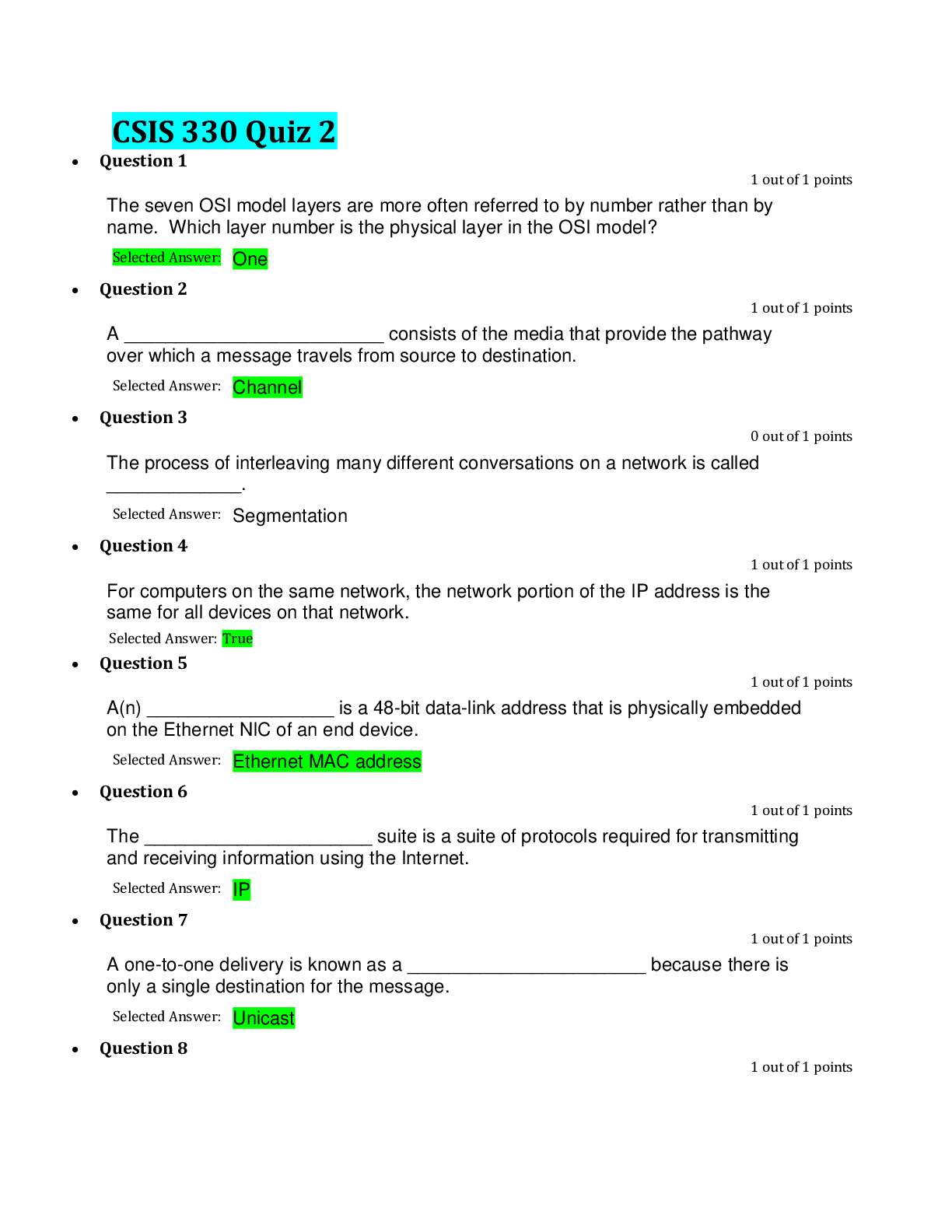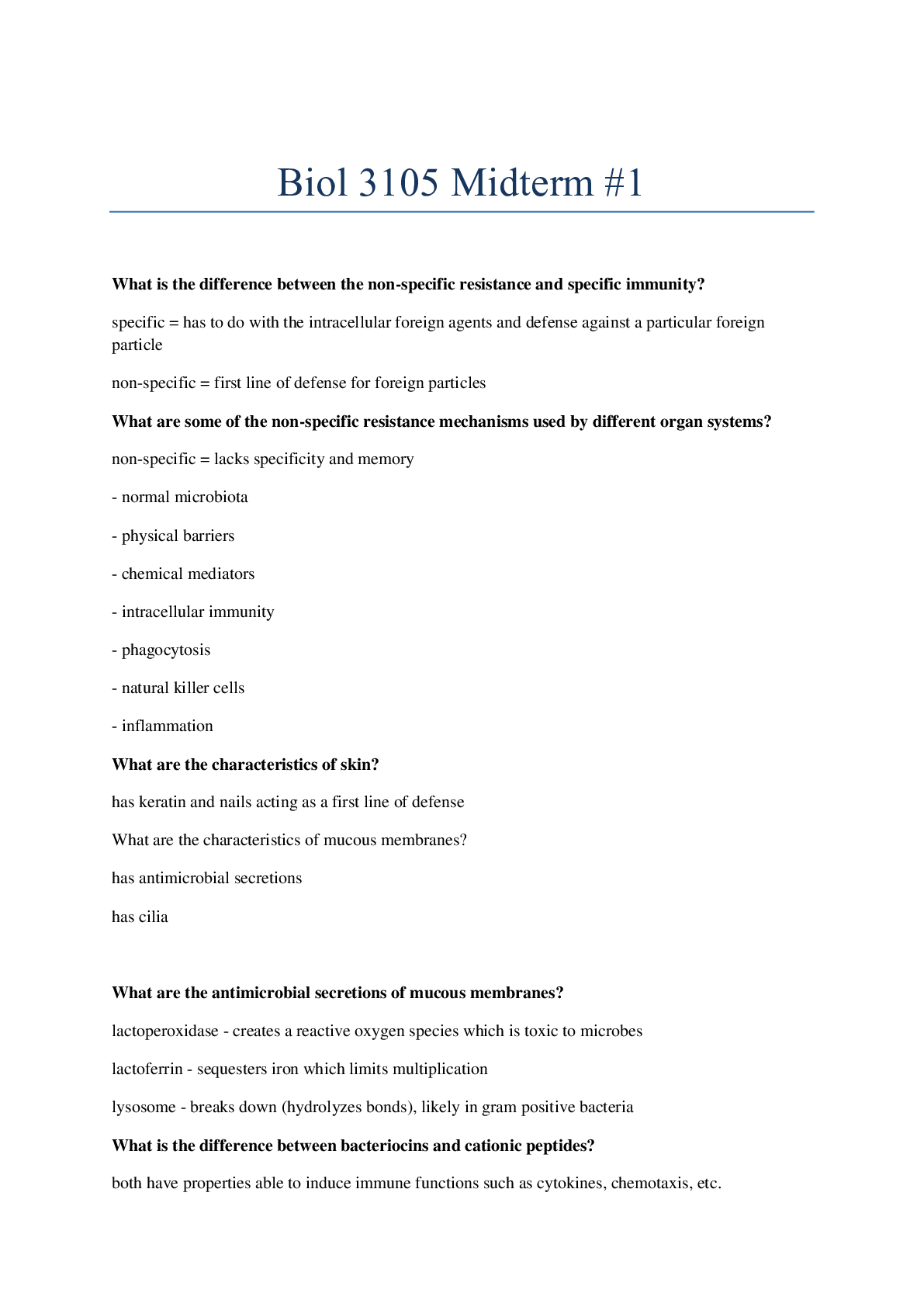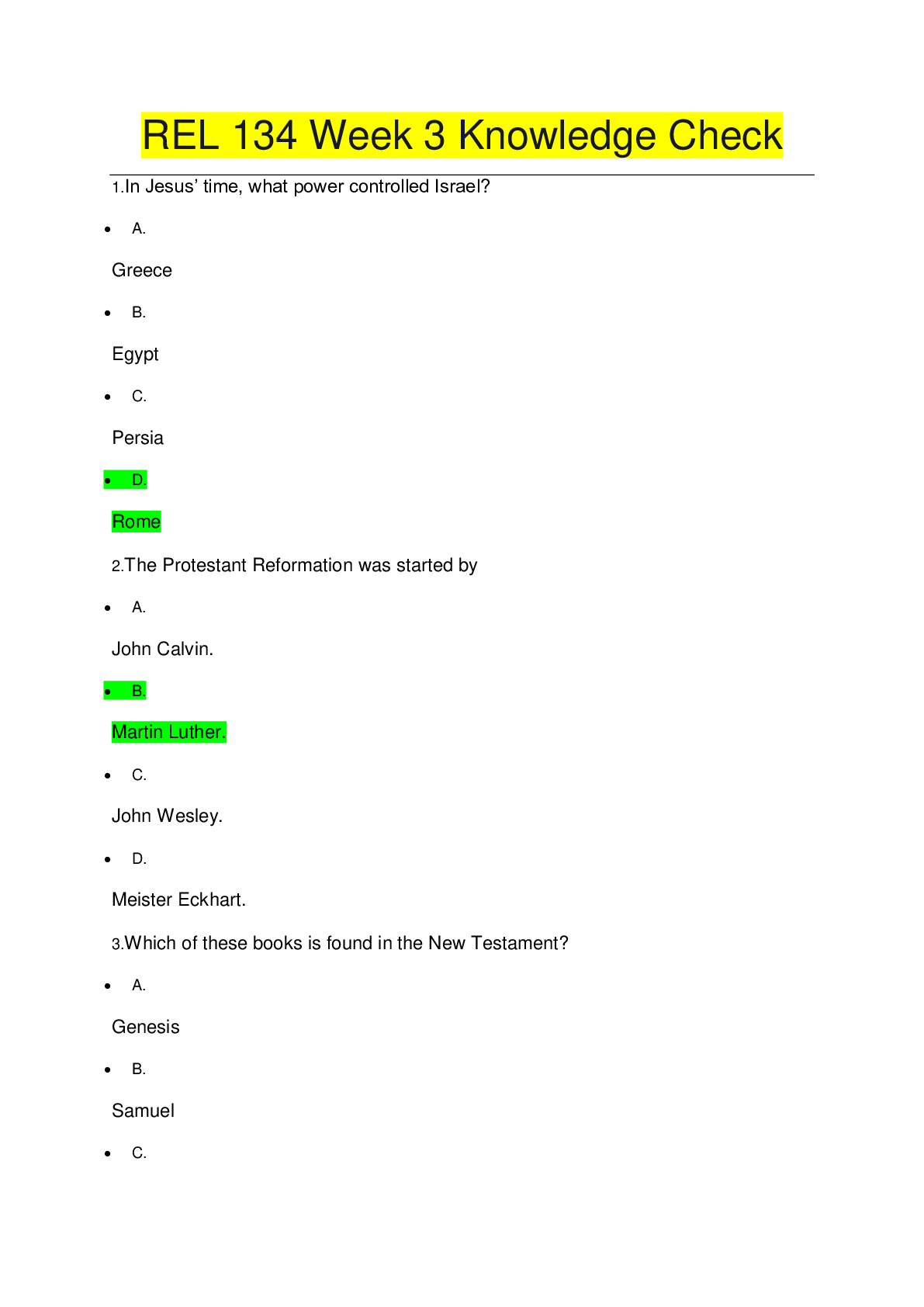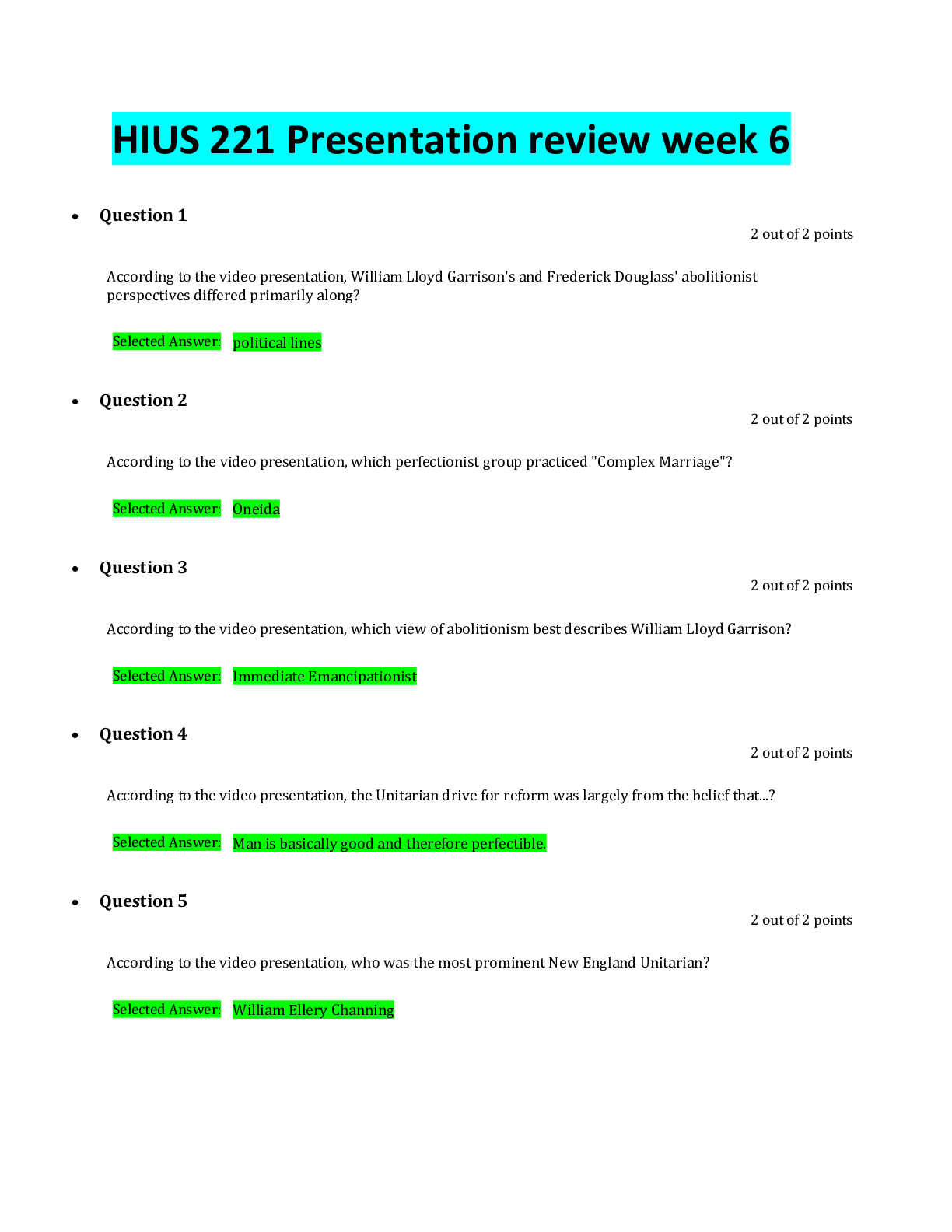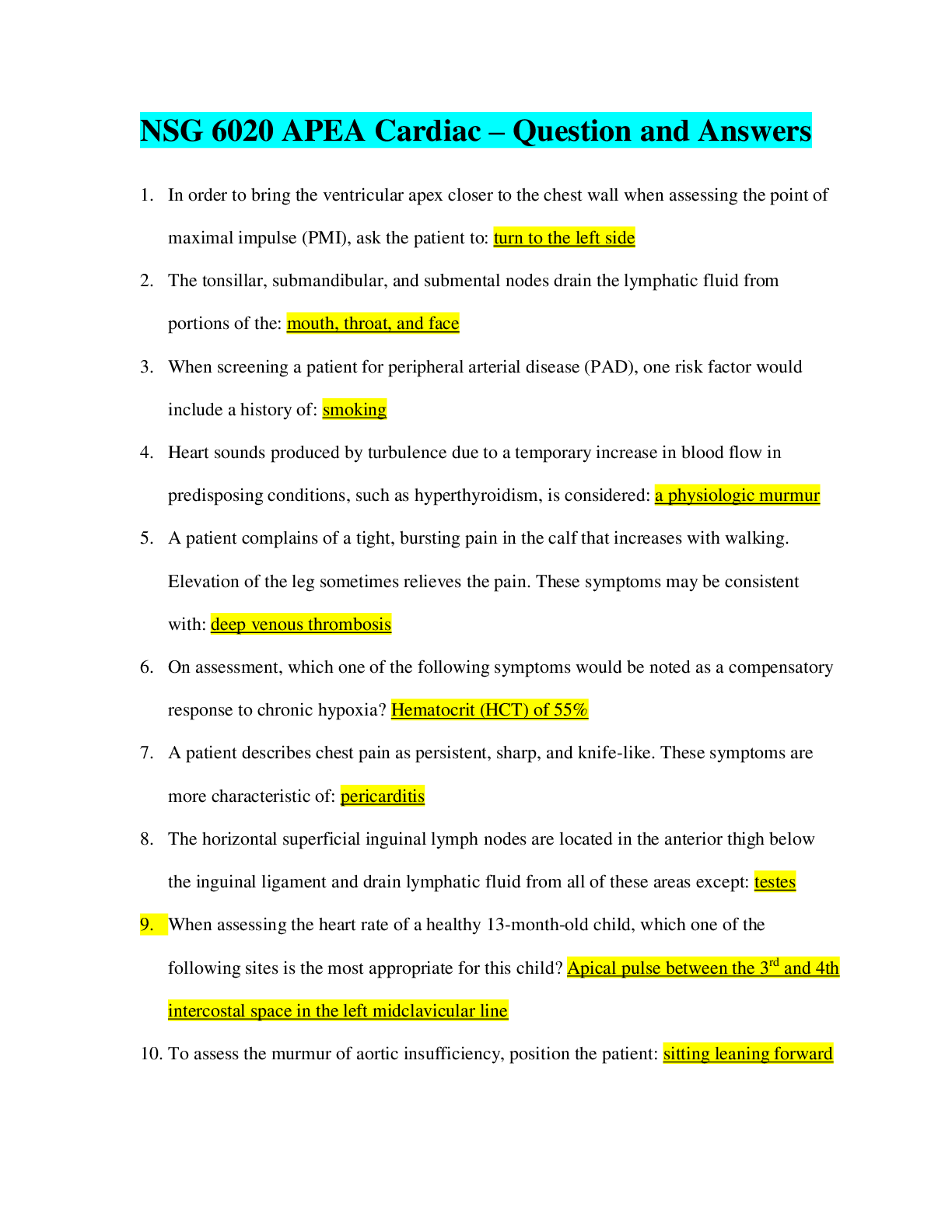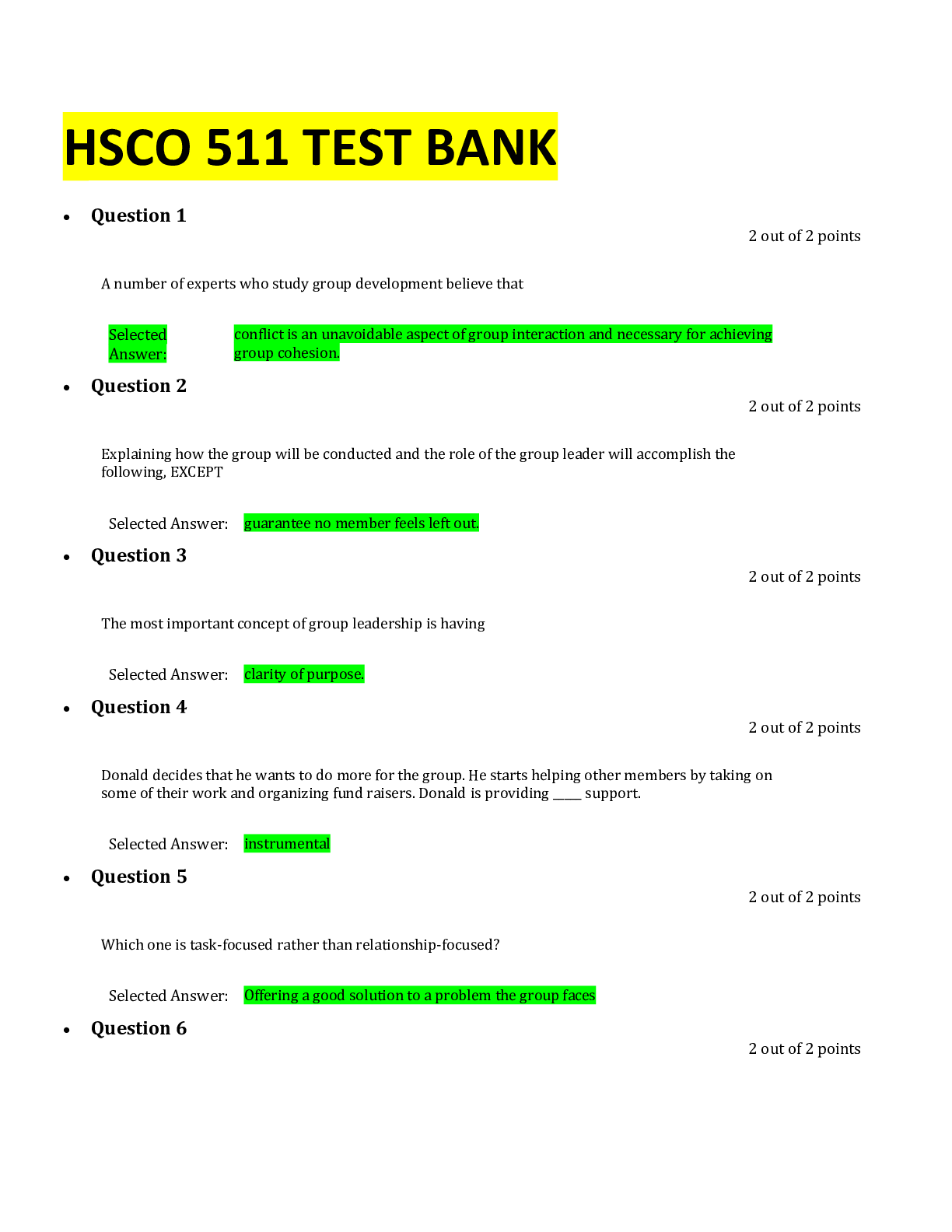Information Technology > QUESTIONS & ANSWERS > Chapter 9—Database Management Systems ( ALL ANSWERS CORRECT ) (All)
Chapter 9—Database Management Systems ( ALL ANSWERS CORRECT )
Document Content and Description Below
Chapter 9—Database Management Systems TRUE/FALSE 1. The database approach to data management is sometimes called the flat file approach. ANS: F PTS: 1 2. The Database Management System provides... a controlled environment for accessing the database. ANS: T PTS: 1 3. To the user, data processing procedures for routine transactions, such as entering sales orders, appear to be identical in the database environment and in the traditional environment. ANS: T PTS: 1 4. An important feature associated with the traditional approach to data management is the ability to produce ad hoc reports. ANS: F PTS: 1 5. The Data Definition Language is used to insert special database commands into application programs. ANS: F PTS: 1 6. There is more than one conceptual view of the database. ANS: F PTS: 1 7. In the database method of data management, access authority is maintained by systems programming. ANS: F PTS: 1 8. The physical database is an abstract representation of the database. ANS: F PTS: 1 9. A customer name and an unpaid balance is an example of a one-tomany relationship. ANS: F PTS: 1 10. In the relational model, a data element is called a relation. ANS: F PTS: 1 11. Data normalization groups data attributes into tables in accordance with specific design objectives. ANS: T PTS: 1 Under the database approach, data is viewed as proprietary or “owned” by users. ANS: F PTS: 1 The data dictionary describes all of the data elements in the database. ANS: T PTS: 1 A join builds a new table by creating links. ANS: F PTS: 1 The deletion anomaly is the least important of the problems affecting unnormalized databases. ANS: F PTS: 1 A deadlock is a phenomenon that prevents the processing of transactions. ANS: T PTS: 1 Timestamping is a control that is used to ensure database partitioning. ANS: F PTS: 1 A lockout is a software control that prevents multiple users from simultaneous access to data. ANS: T PTS: 1 Logical database design is the foundation of the conceptual design. ANS: F PTS: 1 An entity is any physical thing about which the organization wishes to capture data. ANS: F PTS: 1 An ER diagram is a graphical representation of a data model. ANS: T PTS: 1 The term occurrence is used to describe the number of attributes or fields pertaining to a specific entity. ANS: F PTS: 1 Cardinality describes the number of possible occurrences in one table that are associated with a single occurrence in a related table. ANS: T PTS: 1 [Show More]
Last updated: 1 year ago
Preview 1 out of 9 pages
Instant download

Buy this document to get the full access instantly
Instant Download Access after purchase
Add to cartInstant download
Reviews( 0 )
Document information
Connected school, study & course
About the document
Uploaded On
May 29, 2021
Number of pages
9
Written in
Additional information
This document has been written for:
Uploaded
May 29, 2021
Downloads
0
Views
38

.png)


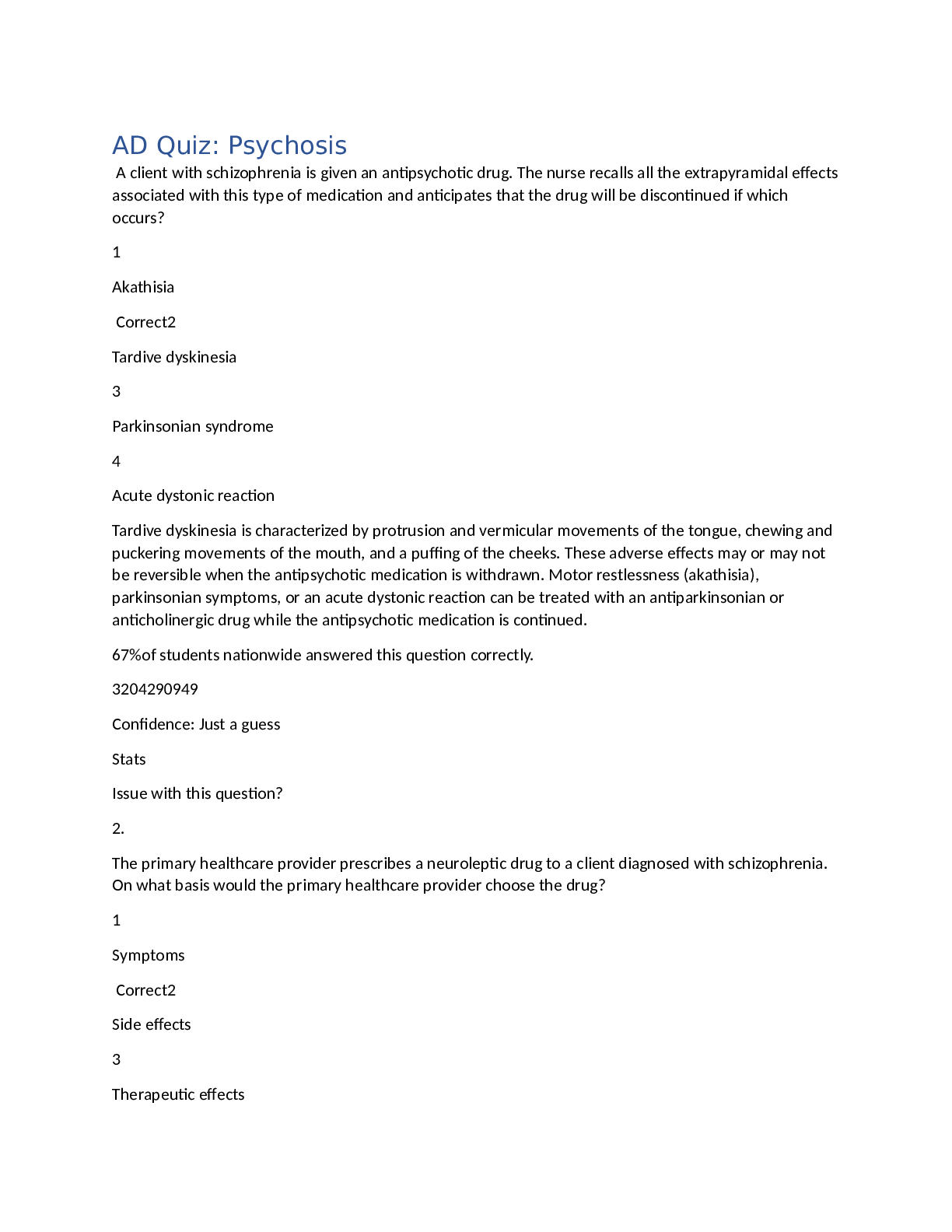
.png)
.png)
.png)
